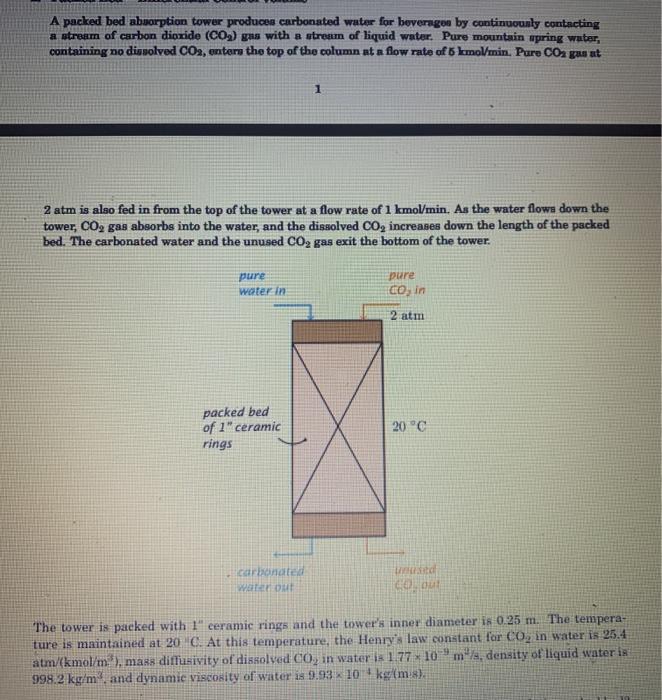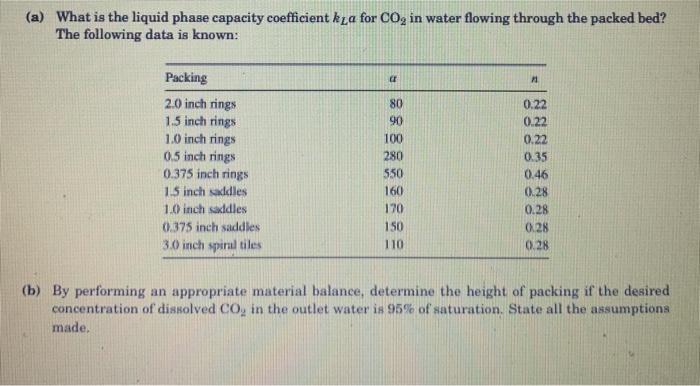Answered step by step
Verified Expert Solution
Question
1 Approved Answer
A packed bed absorption tower produces carbonated water for beverages by continuously contacting a stream of carbon dioxide (CO) gas with a stream of


A packed bed absorption tower produces carbonated water for beverages by continuously contacting a stream of carbon dioxide (CO) gas with a stream of liquid water. Pure mountain spring water, containing no dissolved CO2, enters the top of the column at a flow rate of 5 kmol/min. Pure CO gas at 2 atm is also fed in from the top of the tower at a flow rate of 1 kmol/min. As the water flows down the tower, CO gas absorbs into the water, and the dissolved CO increases down the length of the packed bed. The carbonated water and the unused CO gas exit the bottom of the tower. pure water in packed bed of 1" ceramic rings 1 carbonated water out pure CO, in 2 atm 20C unused CO, out The tower is packed with 1" ceramic rings and the tower's inner diameter is 0.25 m. The tempera- ture is maintained at 20 C. At this temperature, the Henry's law constant for CO in water is 25.4 -9 m/s, density of liquid water is i atm/(kmol/m), mass diffusivity of dissolved CO, in water is 1.77 * 10 998.2 kg/m, and dynamic viscosity of water is 9.9310 kg(ms). 4 (a) What is the liquid phase capacity coefficient ka for CO in water flowing through the packed bed? The following data is known: Packing 2.0 inch rings 1.5 inch rings 1.0 inch rings 0.5 inch rings 0.375 inch rings 1.5 inch saddles 1.0 inch saddles 0.375 inch saddles 3.0 inch spiral tiles a 80 90 100 280 550 160 170 150 110 11 0.22 0.22 0.22 0.35 0.46 0.28 0.28 0.28 0.28 (b) By performing an appropriate material balance, determine the height of packing if the desired concentration of dissolved CO in the outlet water is 95% of saturation. State all the assumptions made.
Step by Step Solution
★★★★★
3.47 Rating (154 Votes )
There are 3 Steps involved in it
Step: 1
a Liquid Phase Capacity Coefficient kLa Calculation The liquid phase capacity coefficient kLa is a measure of the mass transfer efficiency in the absorption process It is given by the equation kLa 2 o...
Get Instant Access to Expert-Tailored Solutions
See step-by-step solutions with expert insights and AI powered tools for academic success
Step: 2

Step: 3

Ace Your Homework with AI
Get the answers you need in no time with our AI-driven, step-by-step assistance
Get Started


